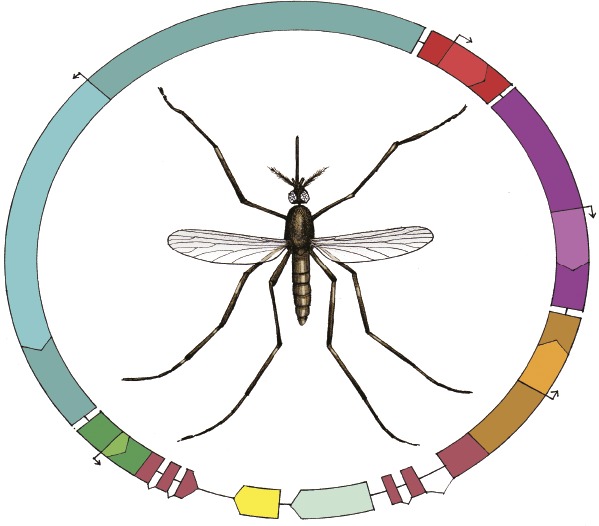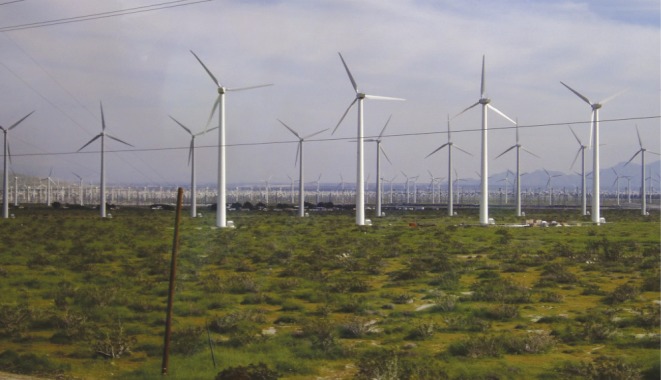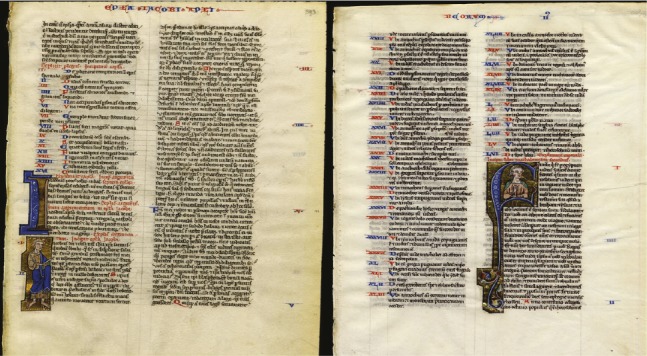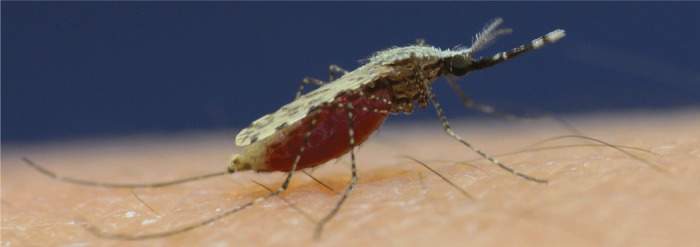Gene drive for malaria mosquito control

Gene-drive system for malaria-resistant mosquitoes.
Worldwide, around 580,000 people died due to malaria in 2014 alone. To spread malarial parasite resistance among mosquito vectors, Valentino Gantz et al. (pp. E6736–E6743) fashioned a clustered regularly interspaced short palindromic repeat (CRISPR)/CRISPR-associated protein 9 nuclease (Cas9)-mediated gene drive system that can introduce and propagate an antiparasite gene among mosquitoes. In a proof-of-concept study using Anopheles stephensi mosquitoes, which account for 12% of malaria transmission in India, the authors demonstrate that an adapted gene drive can spread a dual antiparasite effector gene among mosquitoes. The antiparasite gene, which targets two key proteins produced during an infectious stage of the human malarial parasite Plasmodium falciparum, disseminated through a highly specific gene conversion event with an efficiency greater than 98% in the germline of male and female mosquitoes. The genetic payload, a 17-kilobase construct, is triggered upon blood feeding by targeted mosquitoes. The authors also uncovered a drive-dampening maternal effect on Cas9 expression that must be overcome to optimize the drive for use in the wild. Though the findings represent a promising step toward mosquito population modification, studies on the stability of effector genes in different mosquito strains and environmental conditions are required to validate the drive for malaria control. According to the authors, with appropriate community acceptance and regulatory oversight of the gene drive in field settings, this approach might represent a powerful weapon in the growing arsenal against malaria. — P.N.
Reliability of renewable electricity grid

Wind power in Southern California. Image courtesy of Wikimedia Commons/James McCauley.
Intermittent supplies of wind and sunlight challenge the full implementation of a wind, water, and solar electricity grid in the United States. To address the issue of grid reliability, Mark Jacobson et al. (pp. 15060–15065) modeled wind and solar conditions for a hypothetical period in the United States between 2050 and 2055, in which wind, water, and solar power provides 100% of the electricity after all energy sectors have been electrified. The authors also modeled energy storage mechanisms, including heat storage in water and in underground soil, cold storage in ice and water, and electrical power generation potential storage in hydropower reservoirs, pumped hydropower, and concentrated solar power. Hydrogen and heat provide further electricity storage. The authors found that the modeled system could operate reliably without fossil fuel inputs, load loss, and need for expensive stationary lithium batteries. Further, the authors found that the social cost, a metric incorporating business, climate, and health costs, of the hypothetical system was lower than that of conventional fossil fuel-based grids, and that costs would likely remain stable over time. The results suggest that a reliable electrical grid composed entirely of wind, water, and solar sources may be feasible even after electrification of all energy sectors, according to the authors. — P.G.
Species identification of uterine vellum

Illuminated leaves from the Hornby-Cockerell Bible, circa 1220. Image courtesy of Lisa D. Iacobellis (Ohio State University Libraries, Columbus, OH).
Uterine vellum is a thin form of parchment used in pocket Bibles, of which thousands were produced in 13th-century Europe. Scholars have long disputed whether this parchment comes from the skins of fetal calves and sheep, smaller mammals such as rabbits or squirrels, or specialized production techniques applied to conventional animal skins. Sarah Fiddyment et al. (pp. 15066–15071) developed a noninvasive technique for identifying the animal origin of parchment. The parchment was first rubbed with a nonabrasive polyvinylchloride eraser. Collagen was then extracted from the eraser waste fragments and analyzed by conventional mass spectrometry to determine the source species. The authors analyzed 220 samples from 72 13th-century pocket Bibles using this technique and found that all of the samples came from calf, goat, or sheep skin, with no evidence of unexpected species such as rabbit or squirrel. The particular animals used varied with the parchments’ geographic origins. The pattern of geographic variation was similar to the variation found in other types of parchment and appeared to reflect local availability of livestock. According to the authors, the results suggest that uterine vellum was produced from conventional animal skins using a specific production process, rather than from the skins of unborn or alternative animals. — B.D.
Immunostimulatory noncoding RNAs
Cancer cells can express noncoding RNAs (ncRNAs) not expressed in normal cells, including repetitive genetic elements that are normally silenced. To better understand the role of ncRNAs in cancer cells, Antoine Tanne et al. (pp. 15154–15159) used an approach based on statistical physics to examine large-scale patterns of motif usage by human and mouse ncRNAs. The analysis revealed that many ncRNAs overexpressed in cancer cells had unusual motif usage patterns similar to those of certain pathogens. These ncRNAs included major cancer-associated ncRNAs such as human satellite repeat II (HSATII) in humans and GSAT (major satellite) in mice. The authors found that HSATII and GSAT directly activated the immune response and induced production of proinflammatory cytokines such as IL-12 in human and mouse innate immune cells, respectively. As a result, the authors refer to HSATII and GSAT as immunogenic ncRNAs (i-ncRNAs). The authors report that the RNAs appeared to be activated through signaling pathways mediated by the regulatory proteins MYD88 and UNC93b. According to the authors, a subset of ncRNAs in cancers directly activates the innate immune response and produces proinflammatory cytokines, and these i-ncRNAs may play a major role in mediating immune responses against cancer. — S.R.
Plasmodium adaptation to different mosquito species

P. falciparum malaria is transmitted by different mosquito species in different regions of the world.
The malaria parasite Plasmodium falciparum originated in Africa and spread globally as humans migrated to other continents. Alvaro Molina-Cruz et al. (pp. 15178–15183) infected African, Asian, and South American mosquitoes with P. falciparum strains from these same regions. Each mosquito species was most susceptible to the parasite strain from the same continent as the mosquito, suggesting parasite adaptation to different mosquito vectors. Silencing a component of the mosquito immune system increased the mosquitoes’ susceptibilities to parasites from different continents, suggesting that the mosquito immune system prevented infection by the foreign parasites. Previous work has shown that the Pfs47 gene allows P. falciparum to evade the mosquito immune system, and different variants of this gene are present in different continents. Replacing the Pfs47 gene with a variant from a different continent was sufficient to enhance the parasite’s ability to infect mosquitoes from that continent. The authors propose that Pfs47 allows the parasite to evade detection by the mosquito immune system by interacting with a specific mosquito receptor, but the parasite must carry the correct Pfs47 variant for a given mosquito species in order to survive and be transmitted. The findings suggest that Pfs47 might serve as a potential target for a vaccine to block malaria transmission, according to the authors. — B.D.
Protein recycling and Golgi biogenesis

Redistribution of Golgi enzyme mannosidase II to the ER in presence of an ER trap and upon microtubule disruption.
The Golgi apparatus, a cellular sorting station from which proteins are shipped to various destinations, is considered an autonomous compartment with a stable, permanently localized consignment of enzymes. But an alternative theory holds that Golgi enzymes cycle back and forth through the endoplasmic reticulum (ER), a way station that precedes the Golgi, using the same vesicular transport system as other proteins. Prabuddha Sengupta et al. (pp. E6752–E6761) offer a fresh perspective on the former model of Golgi self-sufficiency, which was based on experiments in which Golgi enzymes were inefficiently retained in the ER in the presence of an ER trap. The authors found that the inefficient retention is attributable to a resident FKBP13 enzyme in the ER, which causes unforeseen competitive protein binding within the ER. Experimentally hindering such competition resulted in redistribution of Golgi enzymes to the ER in the presence of the trap. Thus, Golgi enzymes likely cycle through the ER, supporting the alternative model in which Golgi biogenesis is dependent on continual exchange with the ER. Using a modified ER trapping assay, the authors found that Golgi enzymes are shipped to the ER in tubular carriers, a process dependent on the transport-associated enzymes Rab6a and cation-independent phospholipase A2. Further, Golgi fragmentation during microtubule disassembly and cell division likely involves enzyme recycling through the ER, according to the authors. — P.N.


